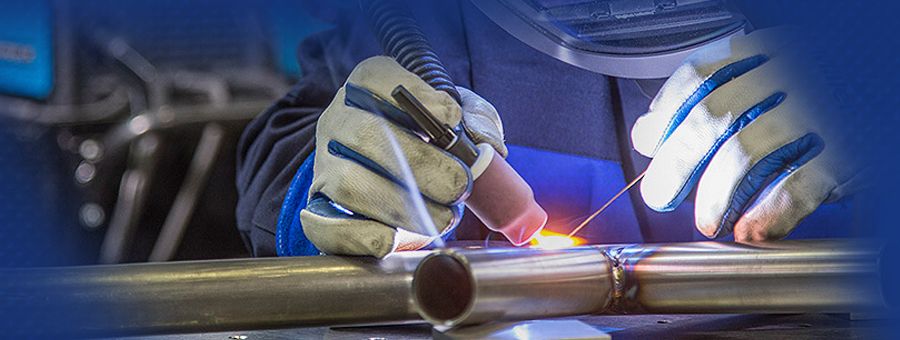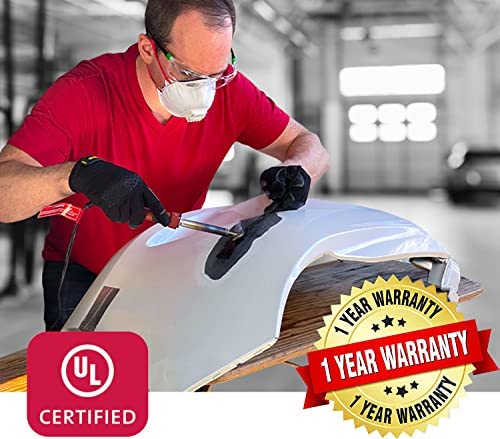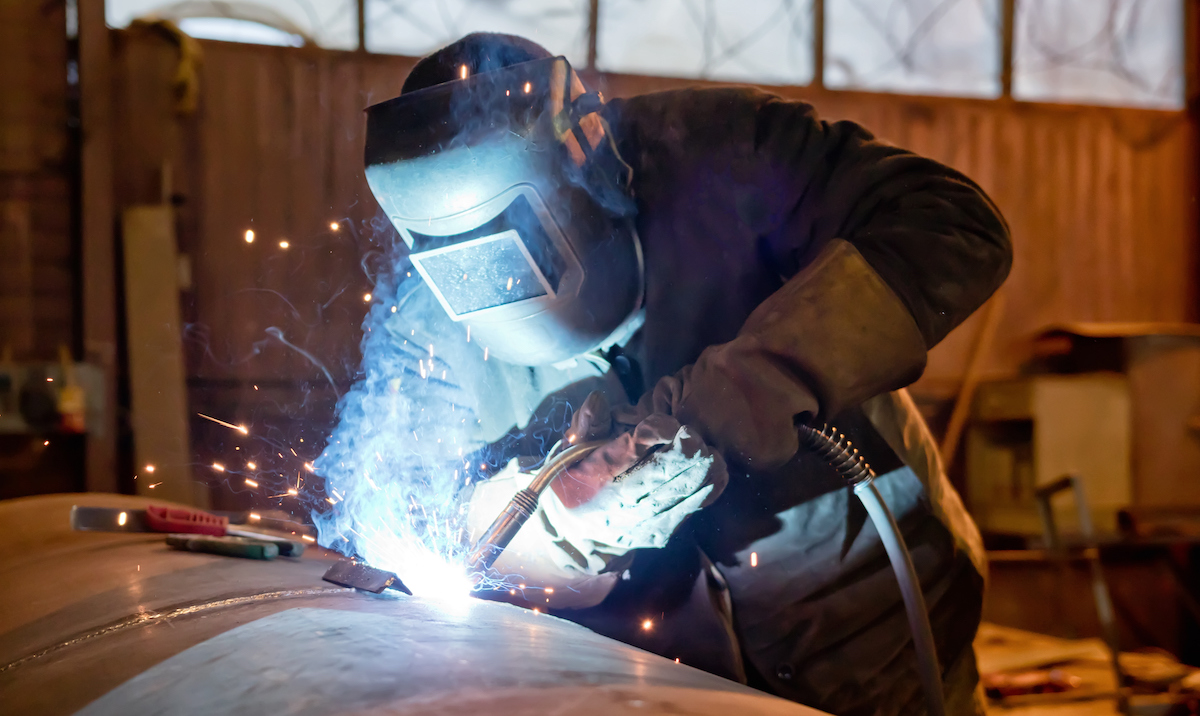Typical Welding Repair Service Issues and How to Address Them Properly
Welding fixings commonly experience a variety of issues that can threaten the honesty of the last item. Common problems include insufficient penetration, porosity, and misalignment, among others. Each flaw offers unique obstacles that call for details techniques for resolution. Recognizing these issues is important for welders aiming to improve their abilities and outcomes. This conversation will certainly explore these usual welding repair problems and reliable techniques to address them.
Inadequate Penetration
Poor penetration takes place when the weld metal stops working to fully fuse with the base product, leading to weak joints and potential architectural failings. This problem often stems from insufficient warm input, wrong electrode angle, or inappropriate welding rate. Welders may come across insufficient penetration due to a mistake of the needed specifications for a particular product thickness or kind. Additionally, contamination on the base product's surface can impede efficient bonding, aggravating the issue. To address inadequate infiltration, welders ought to assure suitable settings on their tools and maintain a tidy job surface. Normal assessment of welds is advised to identify any deficiencies early, permitting prompt modifications and the avoidance of jeopardized architectural integrity in bonded settings up.
Porosity
Porosity is an usual flaw in welded joints that manifests as little gas bubbles trapped within the weld metal. This problem can jeopardize the integrity of the weld, causing decreased stamina and possible failing under tension. Montana Mobile Welding and Repair Welding. Porosity commonly occurs from contamination, dampness, or improper welding methods, which enable gases to run away right into the liquified weld pool. To address porosity, welders must guarantee correct surface prep work, maintain a tidy workplace, and make use of appropriate welding criteria. In addition, choosing the right filler product and shielding gas can reduce gas entrapment. Normal assessment and testing of welds can aid recognize porosity early, ensuring prompt corrective activities are taken, therefore protecting the high quality and reliability of the bonded structure
Misalignment
Imbalance in welding can arise from different variables, consisting of improper arrangement and thermal development. Recognizing the source is crucial for efficient resolution. Several modification techniques are available to realign elements and ensure structural integrity.
Reasons for Misalignment
Welding imbalance typically stems from a range of underlying concerns that can endanger architectural honesty. One key reason is inappropriate fit-up of parts before welding, which can result in voids and uneven surface areas. Variants in thermal expansion during the welding process can also lead to distortion, specifically if the products being signed up with have different coefficients of expansion. Additionally, insufficient fixturing and clamping may fail to hold parts firmly in location, leading to activity during welding. Poorly conserved devices, including welding devices and tools, might introduce variances in the weld bead, further adding to misalignment. Driver error, stemming from not enough training or experience, can likewise play a substantial role in developing misaligned welds.

Correction Methods Offered
Resolving imbalance effectively needs a combination of corrective strategies customized to the specific problems available. One typical technique is using jigs or components to hold elements in the appropriate setting throughout welding, making sure regular alignment. Additionally, pre-heating the materials can assist reduce distortion and enhance fit-up. For considerable imbalance, mechanical adjustment methods, such as utilizing hydraulic jacks or clamps, can be employed to deal with the position prior to welding. Post-weld warm treatment may likewise be needed to relieve tensions triggered by imbalance. Finally, mindful examination and modification during the setup phase can protect against imbalance concerns from becoming substantial problems, advertising a smoother welding process and boosting overall structural integrity.
Distortion
Distortion is a typical difficulty in welding that can arise from various factors, including unequal heating & cooling. Understanding the sources of distortion is essential for applying efficient prevention methods. Addressing this problem not just boosts architectural integrity yet also boosts the general top quality of the weld.
Reasons for Distortion
When subjected to the extreme warm of welding, products commonly undertake changes that can bring about distortion. This phenomenon largely develops from thermal expansion and tightening throughout the welding process. As the weld area warms up, the material expands; upon air conditioning, it acquires, which can develop inner stresses. Additionally, uneven home heating across a workpiece can exacerbate these anxieties, resulting in warping or flexing. The kind of product also plays a considerable function; steels with differing thermal conductivity and coefficients of growth might respond in a different way, causing unpredictable distortions. Inadequate joint style and inadequate fixturing can add to imbalance throughout welding, boosting the possibility of distortion. Understanding these reasons is vital for efficient welding repair and prevention techniques.
Avoidance Techniques
Effective prevention methods for distortion throughout welding concentrate on controlling warmth input and making sure appropriate joint style. Keeping a consistent warm input helps to reduce thermal development and tightening, which can bring about distortion. Making use of techniques such as preheating the work surface can likewise reduce the temperature level slope, promoting uniform heating. Furthermore, selecting suitable joint layouts, such as T-joints or lap joints, can boost stability and decrease tension focus. Carrying out correct fixturing to protect the workpieces in area additionally help in keeping positioning during the welding process. Ultimately, staggered welding sequences can disperse warmth more uniformly, stopping local distortion. By using these techniques, welders can considerably reduce the possibility of distortion and improve the general top quality of their welds.
Breaking
Breaking is a typical concern come across in welding repair work, commonly arising from numerous aspects such as inappropriate cooling rates, product choice, or insufficient joint prep work. The occurrence sip welders of cracks can substantially jeopardize the integrity of the weld, leading to potential failures during procedure. To address this concern, welders must initially assess the origin, guaranteeing that materials are suitable and suitably selected for the details application. Additionally, managing the cooling price during the welding process is crucial; quick cooling can induce anxiety and cause breaking. Appropriate joint style and prep work likewise add to decreasing the danger. Executing these strategies visit the site can enhance weld high quality and sturdiness, ultimately reducing the possibility of cracking in ended up weldments.

Insufficient Combination
A considerable concern in welding fixings is incomplete combination, which occurs when the weld steel does not effectively bond with the base product or previous weld passes - Montana Mobile Welding and Repair Belgrade Fabrication. This defect can lead to weaknesses in the joint, potentially jeopardizing the integrity of the welded structure. Elements adding to insufficient combination include not enough warm input, incorrect welding technique, and contamination of the surface areas being joined. To address this problem effectively, welders should assure proper pre-weld cleaning and surface area preparation, along with change their welding specifications to attain appropriate infiltration and combination. Normal assessment during the welding process can also help determine insufficient combination early, permitting timely rehabilitative steps to improve the overall high quality of the weld
Overheating
While welding repair work can boost structural stability, overheating provides a significant challenge that can result in material deterioration. Too much warmth during welding can modify the mechanical properties of metals, resulting in reduced toughness, enhanced brittleness, and warping. This sensation is specifically crucial in high-stress applications where structural dependability is paramount. Recognizing overheating can include aesthetic inspections for staining or distortion, in addition to checking temperature during the welding process. To mitigate the risks related to overheating, welders need to utilize proper strategies, such as managing warmth input, changing travel speed, and using appropriate filler materials. Furthermore, carrying out pre- and post-weld warm therapies can assist recover product buildings and boost the general high quality of the fixing, making certain long-term efficiency and safety and security.
Regularly Asked Questions
What Are the Common Signs of a Welding Issue?

Exactly How Can I Test My Welds for Quality?
To examine welds for top quality, one can utilize aesthetic evaluations, ultrasonic testing, and radiographic methods. Each technique ensures structural stability, determines problems, and verifies adherence to specified standards, ultimately enhancing the reliability of the welded joints.
What Safety and security Safety Measures Should I Take While Welding?
When welding, one should prioritize security by wearing suitable Get More Information personal protective devices, ensuring correct ventilation, safeguarding flammable materials away, keeping a tidy work area, and recognizing environments to stop injuries and crashes.
Can I Fix a Weld Without Renovating the Entire Joint?
Fixing a weld without redesigning the whole joint is feasible, depending upon the damages (Welding). Strategies such as grinding, adding filler product, or utilizing a welding procedure can efficiently deal with details defects while maintaining the surrounding framework
What Equipment Are Crucial for Effective Welding Repairs?
Crucial tools for reliable welding repair work include a welding equipment, cord brush, grinder, safety gear, clamps, and filler materials. Each device plays an essential function in ensuring top quality and safety and security during the fixing procedure. Porosity typically emerges from contamination, moisture, or improper welding techniques, which permit gases to escape right into the liquified weld swimming pool. Inadequately kept tools, including welding makers and tools, might introduce disparities in the weld grain, more adding to misalignment. When subjected to the extreme warm of welding, materials usually undertake adjustments that can lead to distortion. Breaking is a common concern experienced in welding repairs, often resulting from different variables such as incorrect air conditioning rates, material choice, or inadequate joint prep work. A substantial issue in welding fixings is incomplete combination, which occurs when the weld metal does not properly bond with the base product or previous weld passes.
Comments on “Montana Mobile Welding and Repair Welding shares solutions on addressing heat distortion effectively”